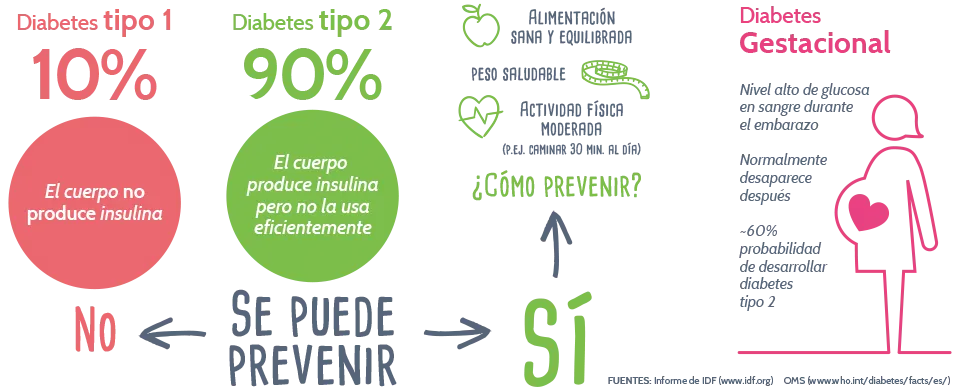A recent study by the University of Lund, in Sweden, carried out on 13,720 patients with diabetes, showed a new classification of this disease, giving five types and not two, as it had been sustaining.This information would open a new path to better personalized and more effective diagnoses and treatments.
The sample was made about more than 13,000 people recently diagnosed with diabetes, between 18 and 97 years old, and with a follow -up of almost 10 years.The main difference in these results is that type 2 diabetes would be subdivided into several subgroups, which would help reduce the risk of other complications derived from this metabolic disorder and to offer better treatments, more personalized for each of the subtypes.
According to the results published in the specialized magazine ‘The Lancet Diabetes & AMP;Endocrinology ’, in view of this new classification, can be improved, and to a large extent, the prediction of severe future complications product of diabetes, such as renal damage, retinopathy, osteoporosis and heart complications and blood vessels.
Today, about 425 million people worldwide suffer diabetes - one of each eleven adults, a more than significant figure - and it is estimated that by 2045 this figure increases to more than 620 million.So everything that can help improve the diagnosis and treatment of this disease is more than welcome.
At present, diabetes is divided into type 1 -which affects about 10 percent of the total patients -and type 2 -between 85 and 90 percent -and others less frequent as lada type (or diabetesAdult autoimmune of the adult), mody type (characterized by the disease appears with less than 25 years) and secondary diabetes.
Now, and according to the Swedish study, these five groups would remain -all of them appointed by its acronym in English.
- Group 1, SAID (severe autoimmune diabetes)Altered insulin production.
- Group 2, Sidd (severe insulin deficiency diabetes) : It is suffered by people with high HBA1C (glycosylated hemoglobin), altered secretion of insulin and moderate insulin resistance.This group was the one that recorded the greatest incidence of retinopathy.
- Group 3, SIRD (severe insulin resistance diabetes) : characterized by obesity and severe resistance to insulin.In this group there was a greater incidence of renal damage.
- Group 4, MOD (Mild diabetes related to obesity) : Includes obese patients who get sick at a relatively early age.
- Group 5, Mard (Mild diabetes related to age) : It is the group with more people (about 40 percent), and is formed by older individuals.
Given any questions in relation to the content of this article, we recommend that you consult with a professional or trusted doctor.


